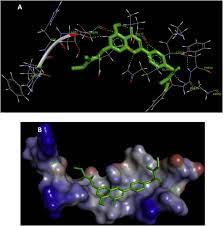Modern Spinal Imaging Techniques
Recent decades have seen tremendous advancements in spinal imaging technologies that have revolutionized the diagnosis and treatment of back conditions globally. Modern imaging modalities such as magnetic resonance imaging (MRI), computed tomography (CT), and ultrasound provide detailed views of the spine that were previously unobtainable. These innovative tools have become standardized in spinal care and are helping improve patient outcomes worldwide.
MRI Leads the Way in Spinal Visualization
Magnetic resonance imaging has emerged as the gold standard imaging technique for evaluating the spine. MRI uses powerful magnets and radio waves to generate cross-sectional images of the spine and spinal cord without using ionizing radiation. It offers exquisite soft tissue contrast that allows physicians to clearly see discs, ligaments, nerves, and other delicate structures that sometimes cause back pain. MRI is especially useful for diagnosing herniated discs, spinal stenosis, tumors, infections, and many other common and rare spinal conditions. In recent decades, MRI technology has advanced significantly with higher field strength magnets and new pulse sequences providing even clearer pictures. Today, MRI scanners are ubiquitous in hospitals and imaging centers globally, allowing widespread access to its advantages.
CT Fills an Important Niche for Bone Imaging
While MRI dominates for soft tissue imaging of the spine, computed tomography continues to fill an important role for evaluating bones. CT scanning uses rotating X-ray beams and sophisticated computer processing to generate cross-sectional images of the bony spinal column. It offers superior demonstration of fractures, deformities, infections, and other osseous abnormalities compared to other modalities. CT is especially useful for surgical planning when bony anomalies must be precisely mapped. Newer multi-detector CT scanners have vastly increased speed and image quality. Like MRI, CT has become a standard component of modern spinal care facilities worldwide.
Ultrasound Plays a Growing Role
Ultrasound imaging uses high-frequency sound waves to visualize superficial structures in real-time without radiation exposure. While often overlooked for spinal imaging due to its inability to penetrate deeply, ultrasound continues expanding its applications. It is now commonly used to guide injections and procedures in the spine and for initial evaluation of soft tissue structures in the neck. Portable ultrasound units also enable bedside spinal exams. Advances like elastography add functionality by assessing tissue stiffness. Overall, ultrasound provides a low-cost, noninvasive option and its role will likely continue growing globally as technologies evolve.
Applications in Spine Surgery
Precise preoperative imaging is critically important for modern spine surgery. Detailed scans allow comprehensive evaluation of spinal abnormalities and surgical planning tailored for each patient’s unique anatomy and pathology. Navigation systems now integrate preoperative imaging datasets intraoperatively to guide implant placement and decompressive procedures. Postoperative scans document surgical outcomes and identify any complications. As minimally invasive approaches become increasingly utilized, advances in intraoperative imaging continue progressing to enable these techniques. Overall, imaging technologies have vastly improved surgical accuracy, safety, and reproducibility worldwide.
Expanding Global Access
While lacking in many poorer regions historically, spinal imaging availability is steadily expanding worldwide through technology transfer initiatives and improved healthcare infrastructure development. Partnerships between medical companies, hospitals, and governments are increasing MRI and CT access in the developing world. Portable and lower-cost devices expand options. Teleradiology enables remote interpretation to benefit rural areas. Simultaneously, teleradiology education programs globally strive to grow the skilled workforce needed to fully utilize these modalities. Overall, as costs decrease and technologies disseminate more widely, spinal imaging promises to benefit many more populations in the decades ahead.
Over the past few decades, groundbreaking new imaging modalities have revolutionized spinal care delivery worldwide. MRI, CT, and other technologies now provide detailed noninvasive visualization of the spine that has greatly improved diagnosis and treatment. Their applications in spine surgery have also vastly improved accuracy and outcomes. While increased availability remains an ongoing challenge, initiatives worldwide aim to expand global access to these innovative tools. The future promises further exciting advancements in spinal imaging that will bring benefits to even more populations globally.
Note:
1.Source: Coherent Market Insights, Public sources, Desk research
2.We have leveraged AI tools to mine information and compile it



